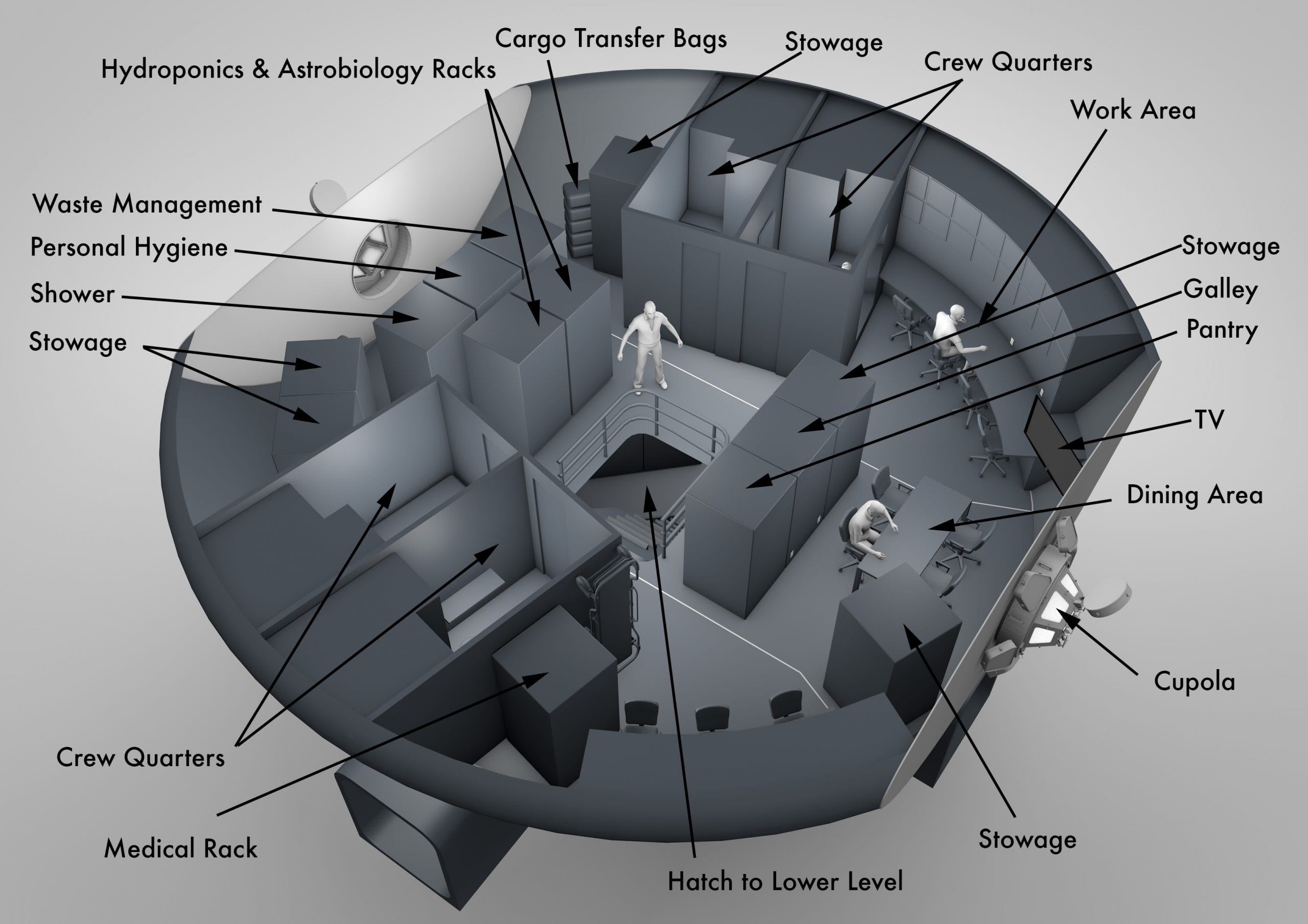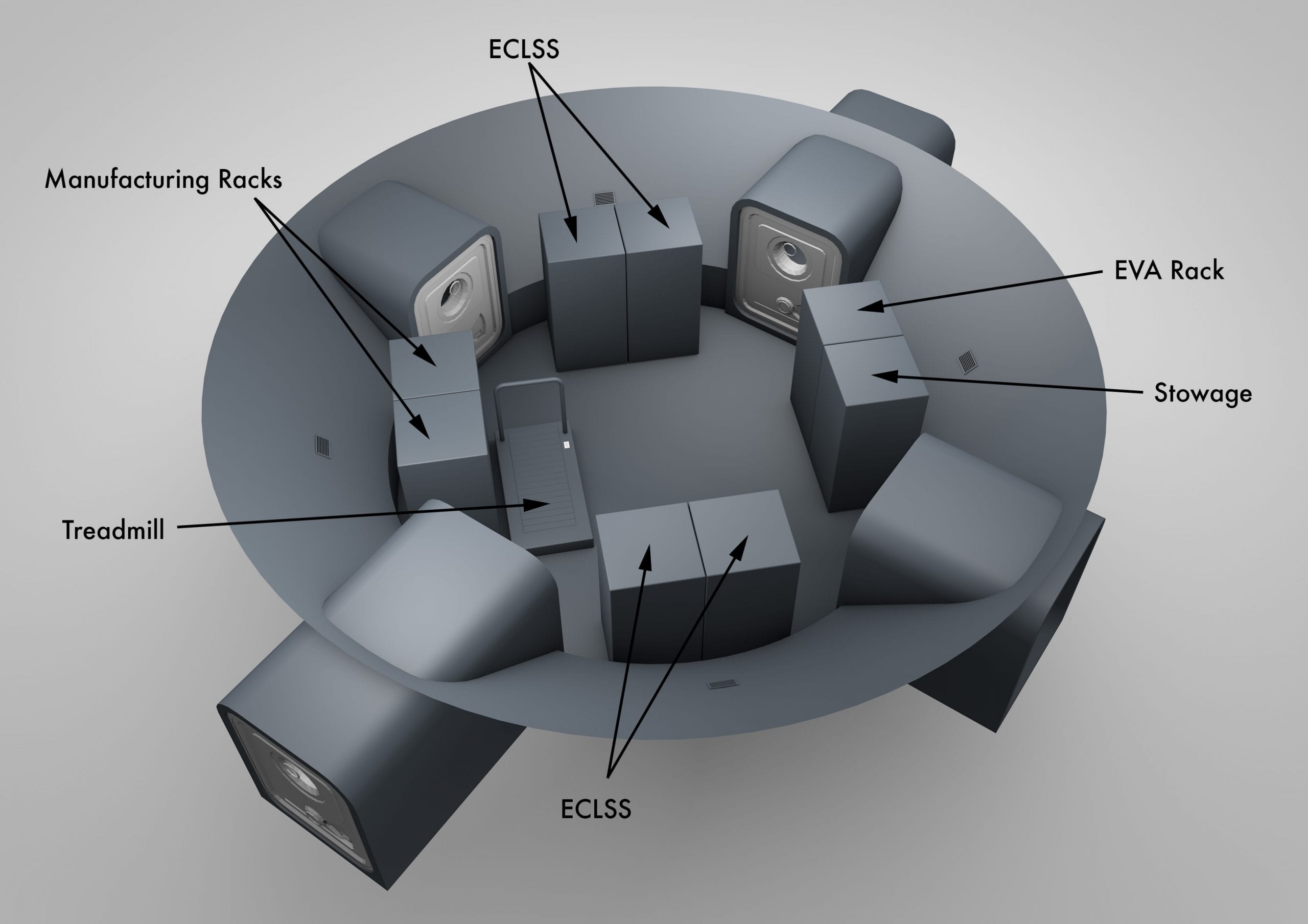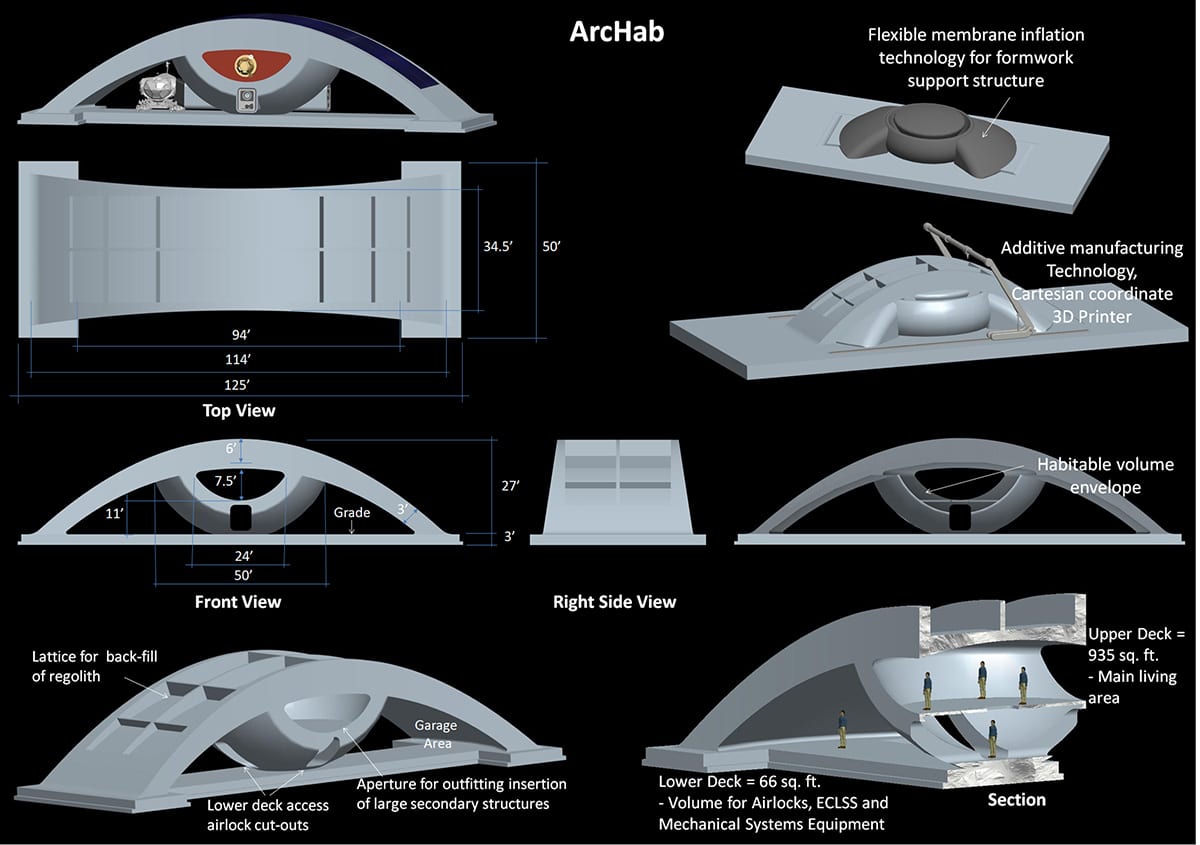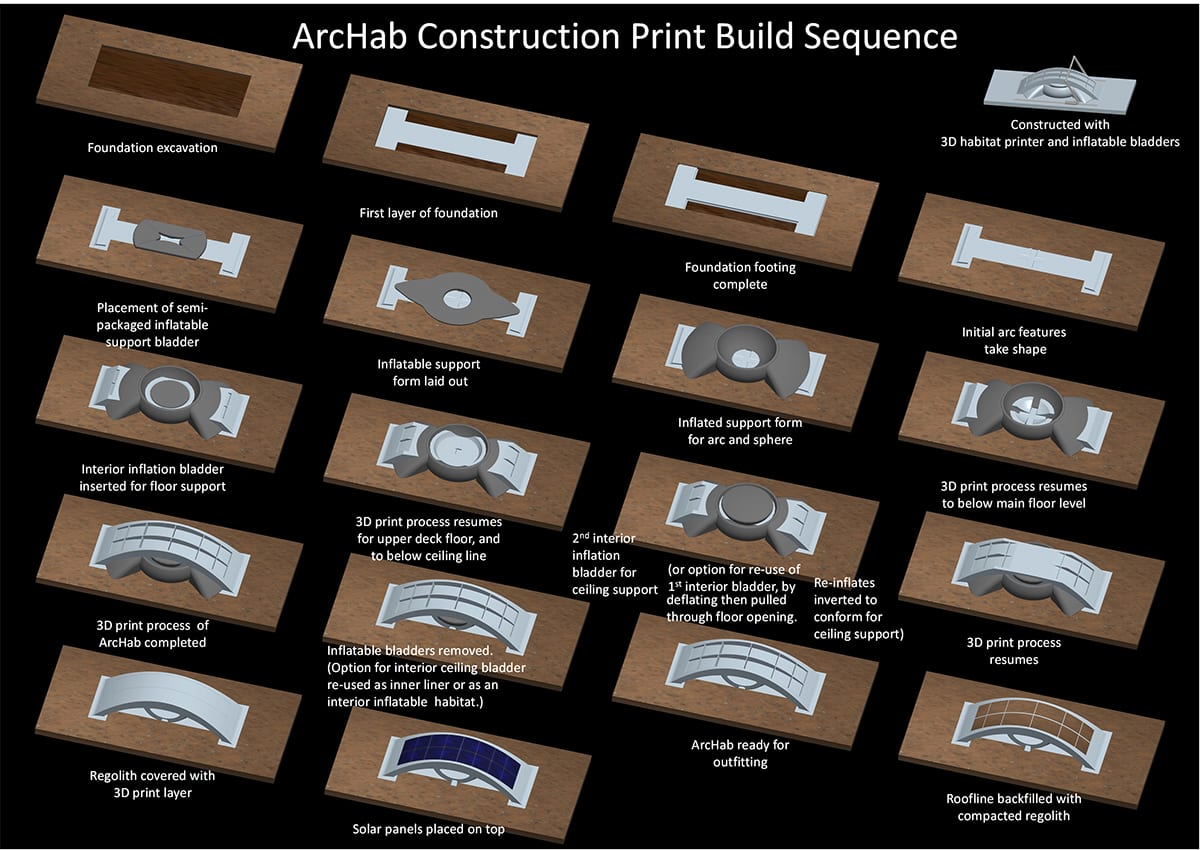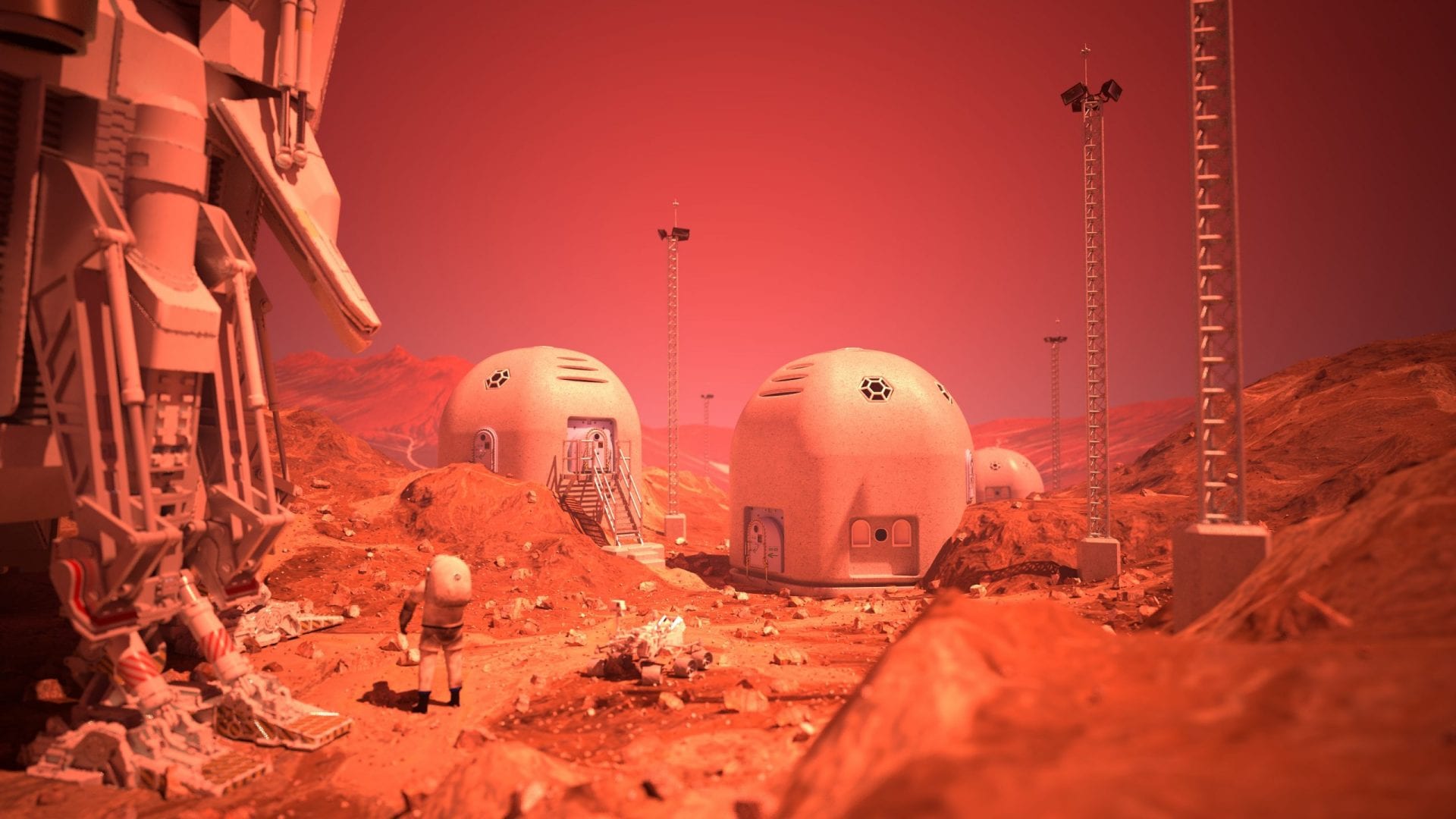The ArcHab design concept employs an additive manufacturing construction technique. The design endeavors to provide a sturdy extreme environment in-situ constructed protective platform serving as a core shell for versatility of secondary structure outfitting options for habitability.
The ArcHab is a departure from traditional planetary habitat design using a basic form factor as a core shell to accommodate a variety of outfitting options. The sweeping esthetic curves of the ArcHab shape serve a purposeful function. The thickness of the arc provides robust radiation protection alleviating the need to bury the habitable volume, while at the same time provides added shelter from the environment for vehicles, and activities related to outdoor maintenance, storage, and handling of materials.
The spherical shape of the habitable area offers the most efficient use of volume for uniform for distribution of gases for pressurization, and offers two floor levels of living space. Taken together, the overall shape gives inhabitants a psychological sense of sturdy protection from the extreme variations in Mars weather, with a sense of “living in a cave without having to be in a cave”.
The versatility of the design leads to a number of innovations with the concept of providing a basic core shell to accommodate a variety of options, such as:
- outfitting options for secondary structures, stowage, and floor plans
- multiple ingress/egress access points
- external protected garage and storage areas
- growth configurations for added volume
- interconnectivity of ArcHabs for base expansion
- adaptability to site locations for accommodating both Moon and Mars planetary terrain features
- siting orientation to maximize sun incidence angles for solar panels
- variation in style design including commercialization for terrestrial use
To maximize internal volume ArcHab begins with a spherical form intersected by an arc to produce a saucer-like internal shape for the livable volume area. This shape also allows for an even distribution of internal pressurized gas stress. The habitable volume area is divided into a high-ceiling main living/work area and a lower deck area to provide access to the ArcHab and location of ECLSS and mechanical systems equipment. The lower deck floor passageway is laid out in a cross-shape pattern, to accommodate multiple outfitting options for airlocks, interconnecting tunnel passageways, or stowage compartments. To alleviate burying the habitation area, the robust thickness of the arc serves a dual function of providing protection from the radiation environment and creating extra external protective maintenance areas for garage or storage functions.
3D-Print Constructability – Construction of the ArcHab is with a process using in-situ material of Martian regolith. Our current concept employs a semi-autonomous construction process due to the need of inserting supporting inflatable bladders to maintain arc curvatures during the printing process.

